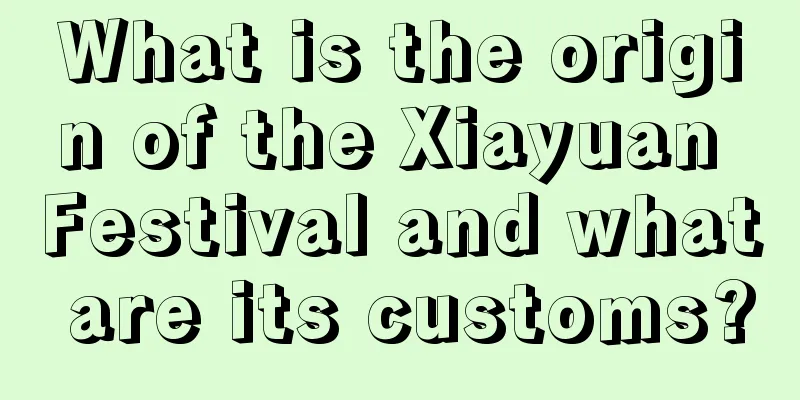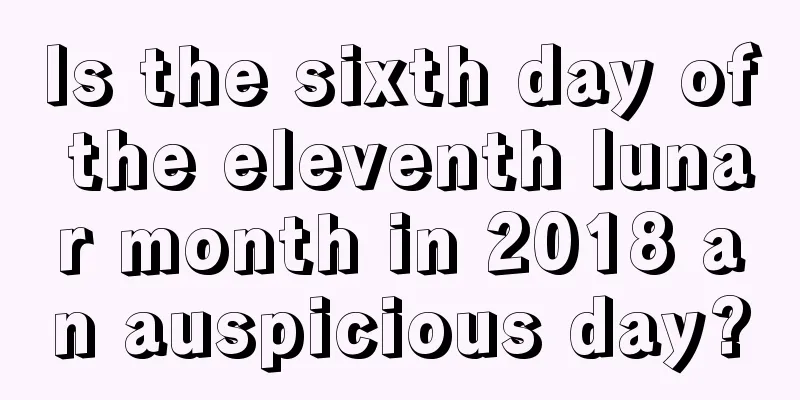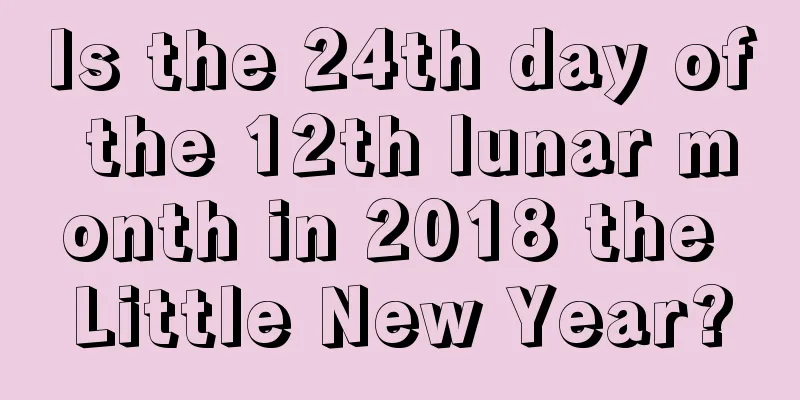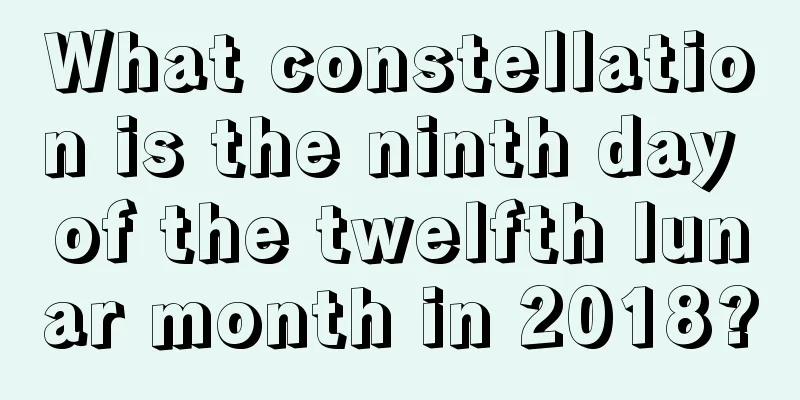What is the date of the first day of the first lunar month in 2021? Is the first day of the first lunar month the Spring Festival?

Introduction: Every lunar calendar day has a corresponding new calendar day. So [What day is the first day of the first lunar month in 2021 in the new calendar? Is the first day of the first lunar month the Spring Festival?] Let’s follow the editor to find out. Shuimoxiansheng.com has carefully compiled detailed information about the first month of 2021. If you want to know the auspicious and inauspicious days in the first month of the year, just go to Shuimoxiansheng.com.What is the date of the first day of the first lunar month in 2021?Gregorian calendar: February 12, 2021 Lunar calendar: Friday, the first day of the first lunar month in 2021 Auspicious gods to follow: Yuedehe, Guanri, Jiqi, Bujiang, Yuyu, Wuhe, Mingweidui Evil spirits to avoid: Dashi, Dabai, Xianchi, Zhuque, Yuejian Zhuansha, Yaobai, Bangzhengfei, Tiandi Zhuansha Peng Zu's 100 taboos: Xin is not in harmony with Jiangmao, and Mao is not in a well. Conflict: Rabbit Day Conflict (Yiyou) Rooster Yearly evil spirit: Yearly evil spirit west——According to the old almanac, the first day of the first lunar month in 2021 is February 12 in the new calendar. Is the first day of the first lunar month the Spring Festival?The first day of the first lunar month was called "New Year's Day" or "New Year's Day" before the Qing Dynasty. It was renamed "Spring Festival" after the Xinhai Revolution.In the Pre-Qin period, it was also called "Shangri", "New Year's Day", "Gaisui", "Xiansui", etc.; in the Han Dynasty, it was called "Sanchao", "Suidan", "Zhengdan", "Zhengri"; in the Wei, Jin, Southern and Northern Dynasties, it was called "Yuanchen", "New Year's Day", "Yuanshu", "Suichao", etc.; in the Tang, Song, Yuan and Ming Dynasties, it was called "New Year's Day", "Yuan", "Sui Ri", "Xinzheng", "Xinyuan", etc.; and in the Qing Dynasty, it has always been called "New Year's Day" or "New Year's Day". After the Revolution of 1911, the Gregorian calendar (solar calendar) was adopted to count years, and January 1 of the Gregorian calendar was called "New Year's Day", and the first day of the first lunar month was called "Spring Festival". The country attaches great importance to the protection of intangible cultural heritage. On May 20, 2006, the "Spring Festival" folk customs were approved by the State Council to be included in the first batch of national intangible cultural heritage list. The Spring Festival is also called the Lunar New Year, commonly known as "New Year" or "New Year". The Spring Festival symbolizes unity and prosperity, and is a festival that brings new hope for the future. ——From the introduction of the festival on the first day of the first lunar month, we can know that the first day of the first lunar month is the Spring Festival. This is the first day of the lunar year, which is also commonly known as the "New Year". Customs on the first day of the first lunar month: Sticking pictures of chicken In ancient times, people painted chickens on doors and windows during the Spring Festival to drive away evil spirits. The "Xuan Zhong Ji" written by a person from the Jin Dynasty talked about the celestial rooster on the Dushuo Mountain mentioned above. It said that when the sun just rose and the first ray of sunlight shone on the big tree, the celestial rooster crowed. As soon as it crows, all the chickens in the world start to crow. Therefore, the chicken cut during the Spring Festival actually symbolizes the celestial chicken. However, there is also a saying in ancient mythology that the chicken is a transformed version of the Chongming bird. It is said that during the reign of Emperor Yao, friendly nations offered tribute of a kind called the Chongming bird, which could ward off evil spirits. Everyone welcomed the arrival of the Chongming bird, but the tribute envoys did not come every year. So people carved a wooden Chongming bird, or cast a bronze Chongming bird and placed it at the door, or painted a Chongming bird on doors and windows to scare away evil spirits and ghosts so that they would not dare to come again. Because the Chongming bird looks like a chicken, people later gradually changed to painting chickens or cutting window decorations and pasting them on doors and windows, which became the source of paper-cutting art in later generations. In ancient my country, people attached great importance to chickens and called them "birds with five virtues." "Han Shi Wai Chuan" says that it has a crown on its head, which represents literary virtue; it has spurs on its feet that enable it to fight, which represents martial virtue; it dares to fight when the enemy is in front of it, which represents courage; it shares food with its own kind, which represents benevolence; it keeps watch on time and announces the dawn, which represents faith. Therefore, people not only cut the chicken during the Chinese New Year, but also designate the first day of the New Year as Chicken Day. |
Recommend
Is the tenth day of the twelfth lunar month in 2020 not suitable for raising the beam? Is the tenth day of the twelfth lunar month a good day?
Introduction: Generally, it is necessary to choose...
Is a child born on the tenth day of the sixth lunar month in 2021 a Cancer?
Speaking of Cancer, I believe everyone is familiar...
What is the fate of a boy born on the seventh day of the third lunar month in 2021? OK?
Different boys are born on different dates and hav...
How many months of pregnancy do I need to have if I want my child to be born in the second month of the lunar calendar? What is the fate of the child?
It takes a certain amount of time from pregnancy t...
What are the do's and don'ts on the 15th day of the sixth lunar month in 2017?
The arrival of the leap month of June in the luna...
Is it not advisable to move house the day after Cold Dew on October 9, 2019? What is the normal temperature of Cold Dew?
Introduction: Generally, you need to choose an aus...
What will be the fate and personality of a baby born at 3:00 pm on National Day in 2021?
In 2021, we celebrate the 72nd anniversary of Nati...
What are the customs of the Zhuang people on March 3rd? Do you know the legend of the Zhuang ethnic group’s March 3rd Festival?
March 3rd is one of the festivals of ethnic minori...
What gift is good for Labor Day in 2021?
May 1st Labor Day is a holiday for the working peo...
Can I sign a contract and open the market on the 14th day of the first lunar month, the day before the Lantern Festival in 2020? What will be my fortune?
The Lantern Festival is on the fifteenth day of th...
Is it appropriate to start renovation on October 24th of the lunar calendar in 2017?
Introduction: In traditional Chinese culture, Chin...
Is the second day of the ninth lunar month in 2018 a suitable time to pick up a new car?
The ninth month of the lunar calendar is also kno...
Is it a good time to burn incense and pray on July 29, 2020? What will the hexagram look like on September 16?
Introduction: It is necessary to choose an auspici...
Lunar calendar May 2019 auspicious wedding days
Getting married is a happy event. Since ancient ti...
Can you travel far on the Spring Equinox in 2019? What is the hexagram for today?
Can you travel far on the Spring Equinox in 2019? ...









